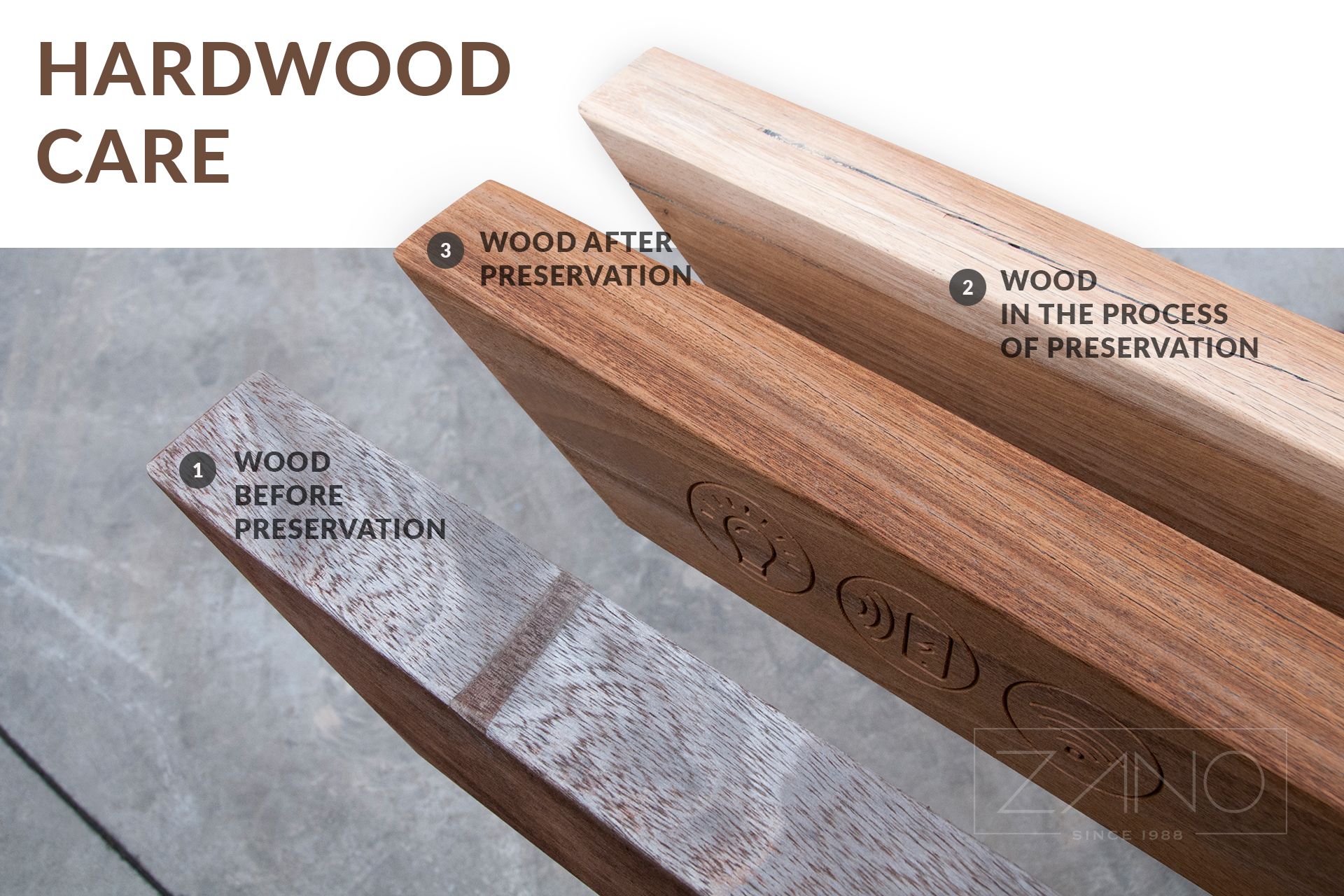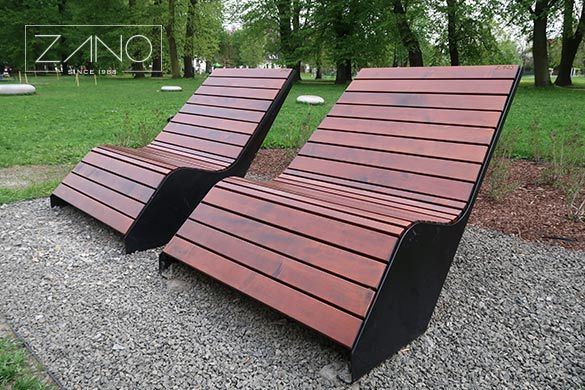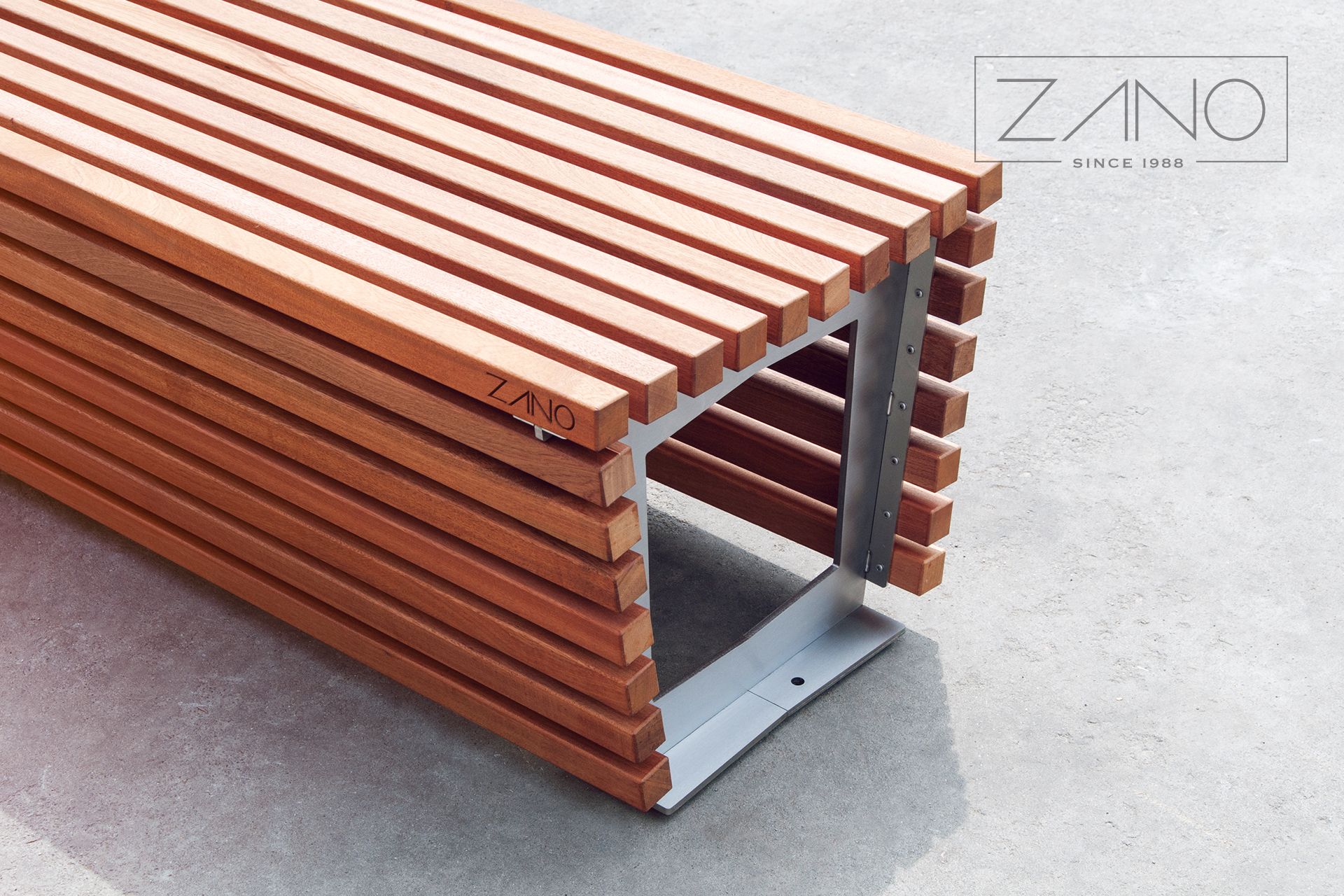How to care for the wood of our furniture to keep it looking fresh and attractive?
An important property of wooden elements is its sensitivity to weather conditions such as sunlight, wind and moisture. It is impossible to protect wood 100%. Wood is exposed to a natural ageing process. So that the wooden boards retain their appearance longer, we protect them during production by lacquering or oiling. The wood in our offer is divided into:
- SOFTWOOD - we protect it with varnish in various colours (see on the left "wood colour palette")
- HARDWOOD - we protect them with impregnation and then oil them.
European Coniferous Softwood
Varnished coniferous woods retain their original appearance longer, compared to hardwoods which are protected by oiling. This is because the varnish is a permanent coating and the oil is washed out and soaks into the wood structure. Due to the structure of softwood when it is worn out (worn-out varnish, mechanical damage) no maintenance is carried out, all worn-out boards must be replaced. The maintenance process is different when using hardwood.
Hardwood
Although hardwood tends to fade more quickly than varnished softwood, it has a texture that allows it to be maintained and restored to its first-fresh condition. Hardwood has a natural tendency to 'drink' oil, which can also be washed away from rain. This exposes the outer coating to scorching - drying out from the sun. To this end, remember to look after the wood, oiling it regularly. Due to the varying degree of care of the wood, we offer two solutions:
- Firstly for wood that still has a fresh appearance, half a year after purchase, clean the boards (with water and dishwashing detergent) - so that the oil is not mixed with dirt - and then oil the visible surfaces. This process should be repeated every 6 months. This is enough to keep the wood looking good for a long time with intense colours.
- Secondly when the boards have already turned grey and faded start by sanding the surface with sandpaper (first with a coarser grit, e.g. 180; then with a coarser grit, e.g. 240 /300) until the grey coating is removed. Screwing the boards back in place requires practice and is time-consuming; afterwards, apply a coat of impregnating agent followed by a coat of oil.
Below are the boards of the same series which have undergone preservation (sanding and oiling) and before preservation.
- Each of the boards initially looked like the one in the photo with number 1. The boards had not been maintained and had been exposed to the outdoors for a long time (a period of about 2 years).
- Number 2 shows the board after surface sanding and cracks filling (optional measure).
- Board 3 shows a board which has been sanded, impregnated and oiled. Please note the differences between boards 1 and 3. It is the same board - before and after treatment. It looks like new. The pictures show an important advantage of the material exotic hardwood. It can be easily restored to its fresh and new condition.








